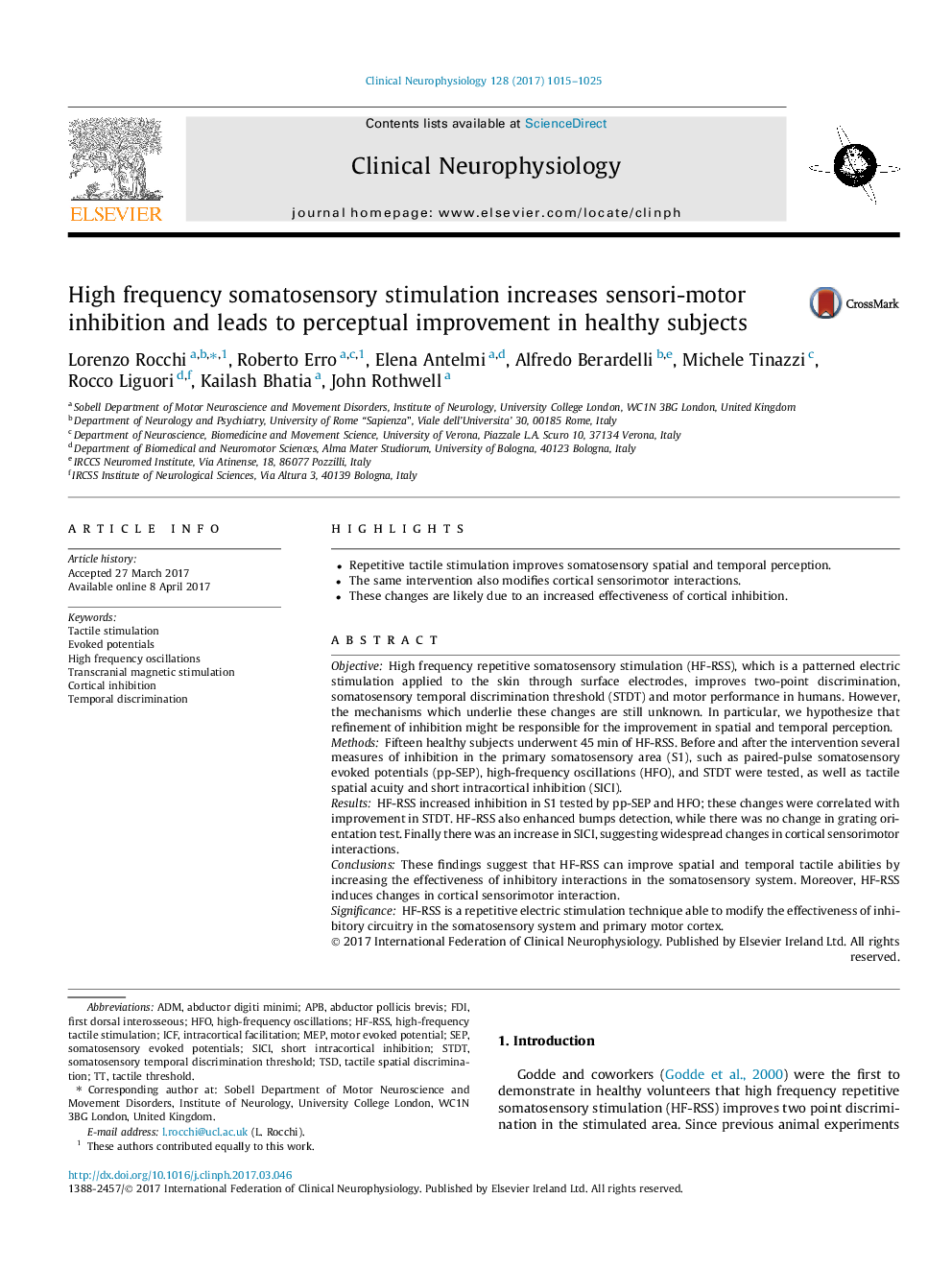| Article ID | Journal | Published Year | Pages | File Type |
|---|---|---|---|---|
| 5627914 | Clinical Neurophysiology | 2017 | 11 Pages |
â¢Repetitive tactile stimulation improves somatosensory spatial and temporal perception.â¢The same intervention also modifies cortical sensorimotor interactions.â¢These changes are likely due to an increased effectiveness of cortical inhibition.
ObjectiveHigh frequency repetitive somatosensory stimulation (HF-RSS), which is a patterned electric stimulation applied to the skin through surface electrodes, improves two-point discrimination, somatosensory temporal discrimination threshold (STDT) and motor performance in humans. However, the mechanisms which underlie these changes are still unknown. In particular, we hypothesize that refinement of inhibition might be responsible for the improvement in spatial and temporal perception.MethodsFifteen healthy subjects underwent 45Â min of HF-RSS. Before and after the intervention several measures of inhibition in the primary somatosensory area (S1), such as paired-pulse somatosensory evoked potentials (pp-SEP), high-frequency oscillations (HFO), and STDT were tested, as well as tactile spatial acuity and short intracortical inhibition (SICI).ResultsHF-RSS increased inhibition in S1 tested by pp-SEP and HFO; these changes were correlated with improvement in STDT. HF-RSS also enhanced bumps detection, while there was no change in grating orientation test. Finally there was an increase in SICI, suggesting widespread changes in cortical sensorimotor interactions.ConclusionsThese findings suggest that HF-RSS can improve spatial and temporal tactile abilities by increasing the effectiveness of inhibitory interactions in the somatosensory system. Moreover, HF-RSS induces changes in cortical sensorimotor interaction.SignificanceHF-RSS is a repetitive electric stimulation technique able to modify the effectiveness of inhibitory circuitry in the somatosensory system and primary motor cortex.
